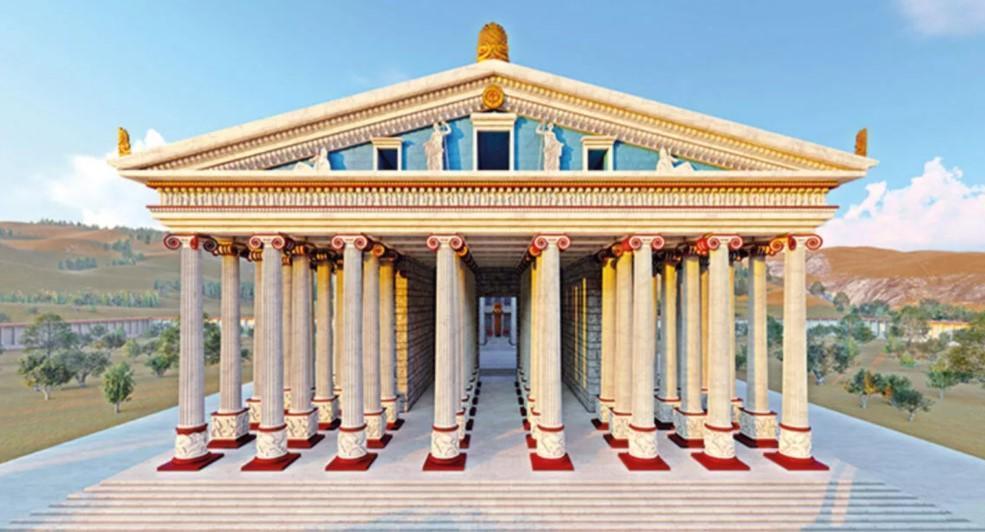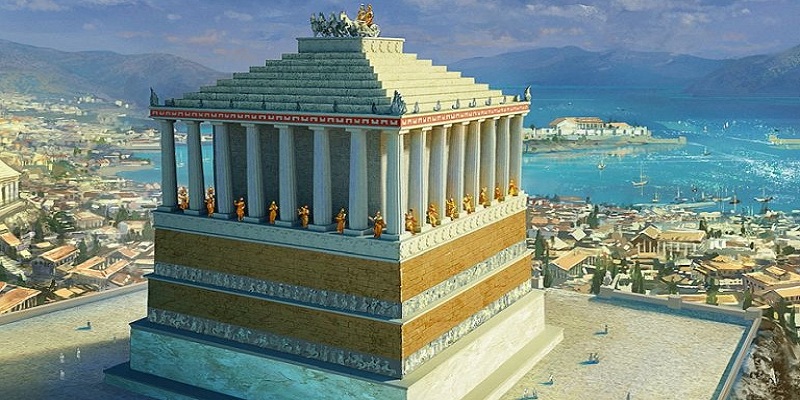Ancient marvels reimagined:
If you were a tourist in ancient times, the Seven Wonders of the Ancient World would be high on your list of must-see places. Thousands of years ago, the Greeks and Egyptians built the Lighthouse of Alexandria and the Hanging Gardens of Babylon, among other engineering marvels. Only one of the seven pyramids, the Great Pyramid of Giza, is largely intact. So, with the help of Budget Direct and Neo Mam Studios, we rebuilt what these incredible locations would look like if they were still popular tourist destinations today. Take a look by clicking or scrolling.
The reconstruction: Temple of Artemis at Ephesus, Turkey:

During its existence, the temple generated quite a commotion because it was often attacked. It was initially destroyed in 356 BC by Herostratus, a famed Greek arsonist who set fire to the temple's wooden beams in search of fame. After being reconstructed, it was destroyed again in AD 262 during an assault by the East Germanic tribe the Goths. The foundations and a single column are all that exist now.
The reconstruction: Lighthouse of Alexandria, Egypt:
The light, which was most likely the second largest human-built monument in the ancient world after the Giza Pyramids, stood for almost 1,600 years. Three earthquakes between AD 956 and 1333 severely damaged the lighthouse. In 1477, the Citadel of Qaitbay (also known as the Fort of Qaitbay) was built atop the remains. Archaeologists uncovered what they believe are the remnants of the lighthouse on the seafloor of Eastern Harbor in 1994.
The reconstruction: Mausoleum at Halicarnassus, Turkey:

The monument, according to Roman author Pliny the Elder, was erected with rich white and gold marble from Athens and red marble from Turkey, and was mounted on a rectangular podium. A spectacular 36-column colonnade led to a 24-step pyramid-like top, which housed a massive marble statue of Mausolus riding a chariot disguised as the Greek hero Hercules. The stones left over after a succession of earthquakes that occurred between the 11th and 15th centuries AD would have been recycled for other projects.
The reconstruction: Statue of Zeus at Olympia, Greece:
The artwork showed Zeus sitting on a cedarwood throne decked with gold, ivory, ebony, and precious stones. In his left hand was a scepter with an eagle perched on top, and in his right was a statue of Nike (the Greek goddess of triumph). The temple stunned the ancient world for a thousand years and was a must-see for anybody attending the ancient Olympic Games. Nobody knows exactly what happened to the statue. The Temple of Zeus was demolished in AD 426, and the statue may have vanished then, or during a fire when it was relocated to Constantinople (Istanbul) around 50 years later.
The reconstruction: Great Pyramid of Giza, Egypt:

Approximately 2.3 million pieces of limestone, each weighing between 2.5 and 15 tonnes, were cut, transported, and carved to produce a structure that weighs approximately 5.7 million tonnes. It has eroded over time, dropping from 481 feet (147 meters) to 451 feet (138 meters) presently. It was previously completely coated in highly polished white stones that produced a streamlined surface, as reimagined here. Some of these casing stones are currently on public exhibit, including one at the National Museum of Scotlander.
The ruins: Hanging Gardens of Babylon, Iraq:
Probably the most mysterious of all the wonders on the list, the fabled ancient gardens are believed to have been situated near the royal palace in Babylon, just south of modern-day Baghdad, Iraq. The gardens are thought to have been built by Emperor Nebuchadnezzar during his reign sometime between 605-561 BC, for his wife Amytis – apparently, she missed the scenery of her homeland in Persia. However, because manuscripts from the time make no mention of the gardens, some believe they could just be a myth.
The ruins: Colossus of Rhodes, Greece:

This massive statue was not named the Colossus of Rhodes for nothing. The bronze sculpture of the Greek sun-god Helios stood 105 feet (32 metres) tall in Rhodes port after 12 years of construction between c.294-282 BC. It was constructed by artist Chares of Lyndus to commemorate the failed besiege of Rhodes by the then-ruler of Cyprus in 305 BC.
The reconstruction: Hanging Gardens of Babylon, Iraq:
Later, Classical sources describe the Hanging Gardens as being built of stone (a rare item in the area) and like a tiered mountain. The "hanging" was caused by exotic plants and trees that overhung the walls. To keep the plants alive in the desert, an early irrigation system from a well or the nearby Euphrates River was likely used to pump water through the structure.

.jpg)